Tomb 72
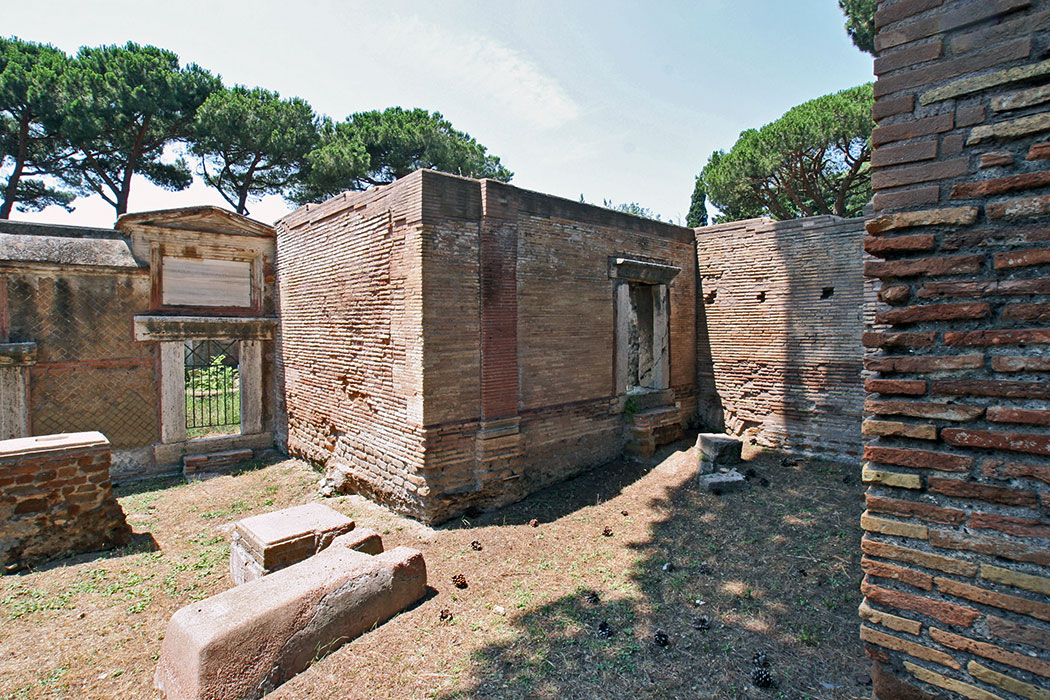
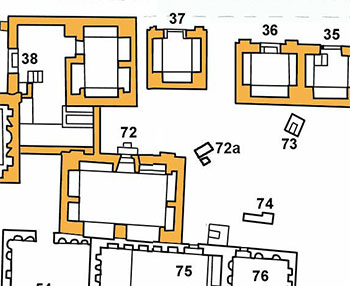 The back of tomb 72 borders on the front of both tomb 75 and tomb 54. Only the entrances of the two last tombs have been left free.
The back of tomb 72 borders on the front of both tomb 75 and tomb 54. Only the entrances of the two last tombs have been left free.
The grave was built above older graves and therefore lies a little bit higher than the surrounding tombs.
These older tombs, from the time of Trajan, are destroyed for the greater part. The burial chamber can be reached via three steps.
Inside the burial chamber we see an organisation for the a mixed form of burial. However, the bigger part is equipped for inhumation. Alongside the walls we find a double row of arcosolia and above a few small niches to keep the urns for the ashes.
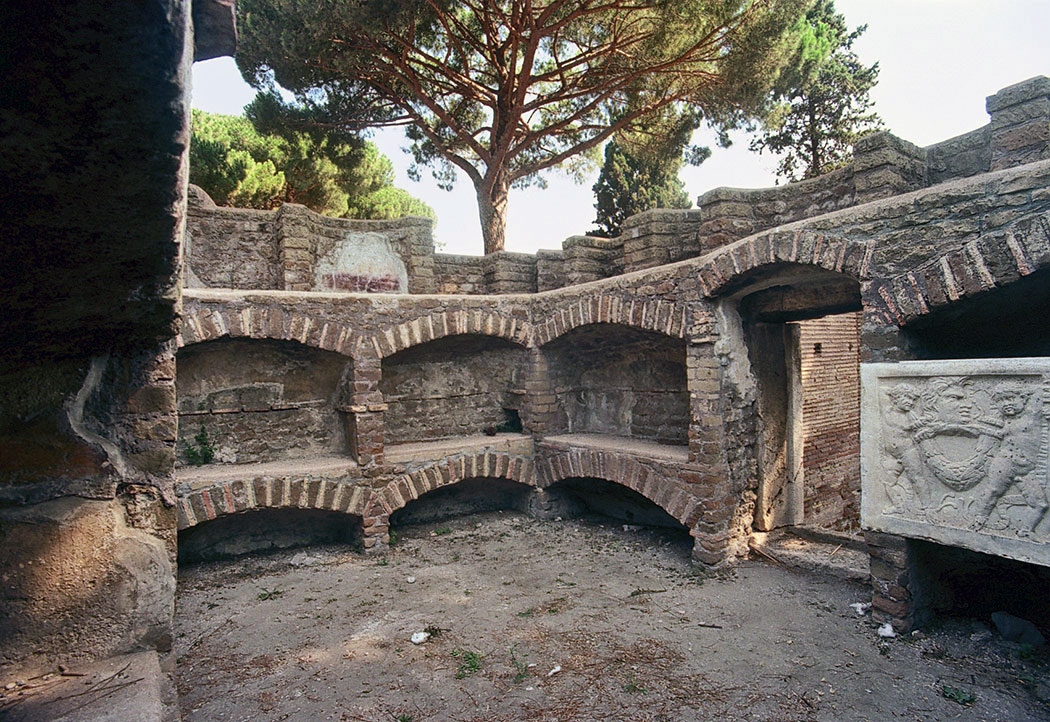
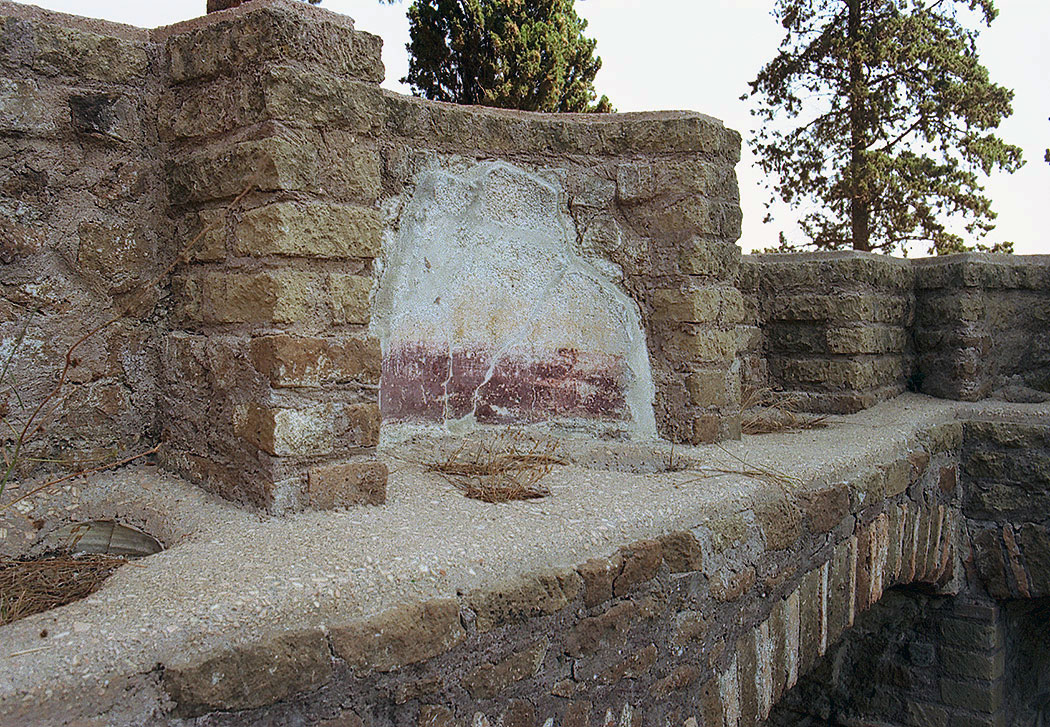
In front of the niche to the left of the entrance, a marble slab has been found. On the slab a married couple is depicted. The hairdo is from the time of Marcus Aurelius and Faustina the Elder (between 160 and 180 AD).
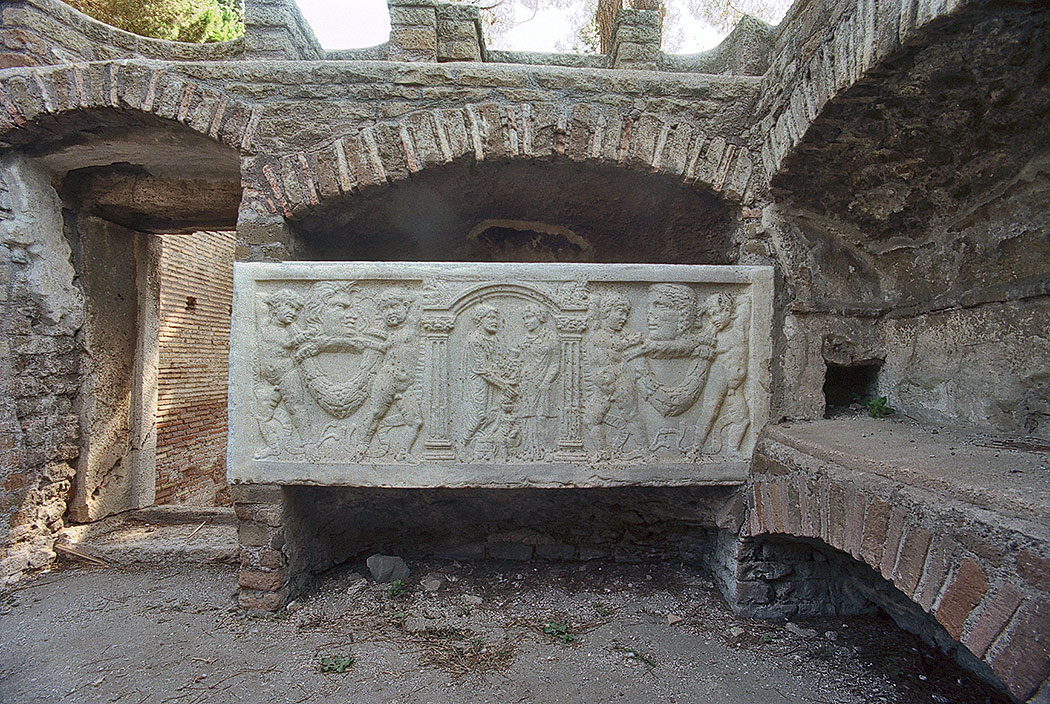
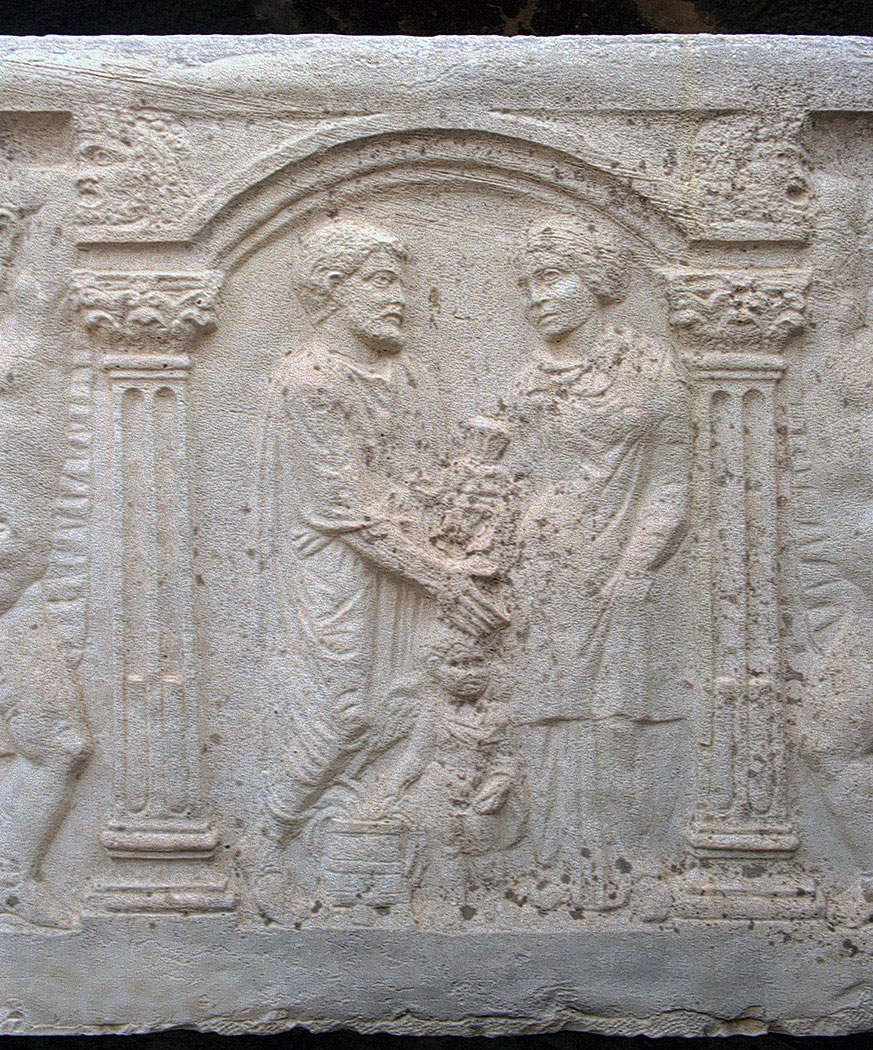
The couple is standing in a niche flanked by columns. Above the columns are masks. The man has a scroll in his left hand, with the other he is holding his wife. Between them we see a winged cupid.
This popular scene was called a dextrarum lunctio: married people giving each otclick for detailher the right hand. On both sides of the niche four youths wear festoons of fruit with two masks above.
Beneath the floor, originally equipped with a black-and-white mosaic with flower motifs, were burial places. Tomb 72 was richly decorated, but only a few traces of these decorations have been found.
TOMB 72 A
Tomb 72A is a semicircular tomb "a cassone" lying in the open space in front of tombs 75 and 76, and in the same line with the passageway to the Via Severiana between tombs 36 and 37.
Next to tomb 72A is a base of brick, probably used as support for a table top. It is not clear whether this funeral table belonged to tomb 72A, or to one of the surrounding tombs. The grave was not described by Guido Calza.
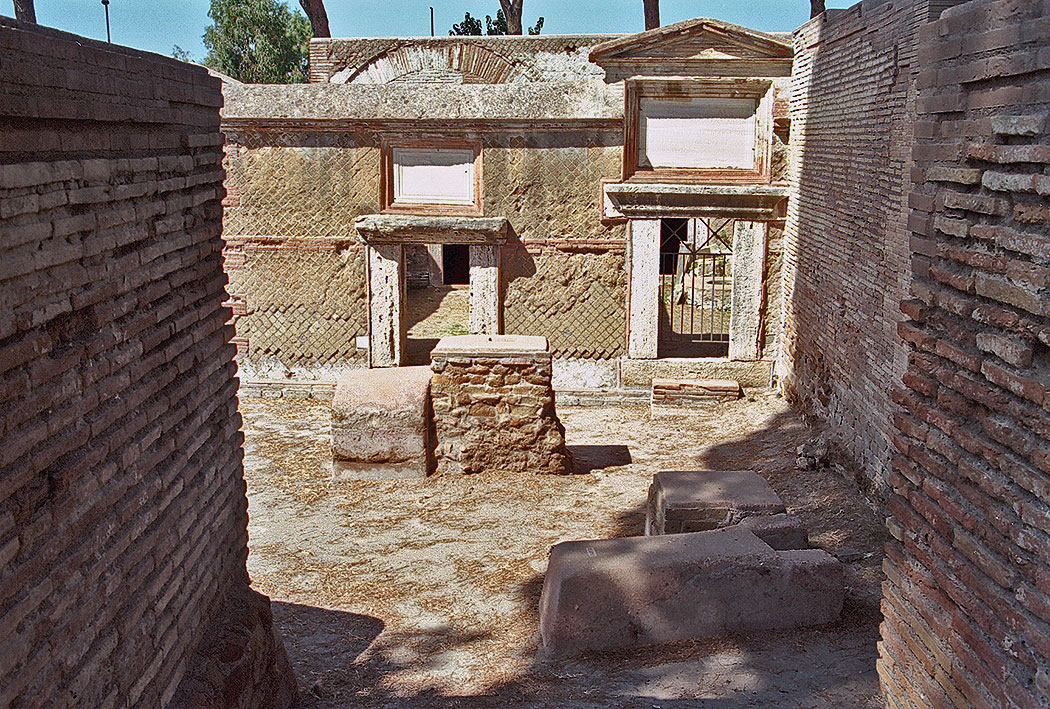
In front of the entrance of tomb 75 amd tomb 76 we see the small tomb 74.
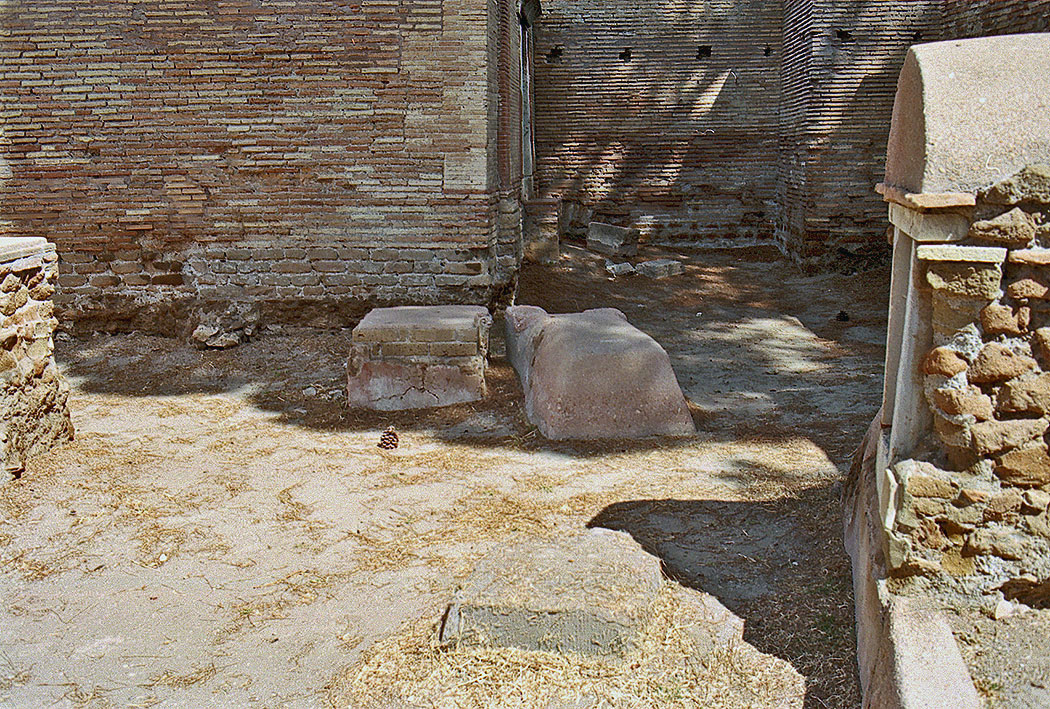
On the right side a part of tomb 73
- Sources
- Russel Meigs - Roman Ostia, At the Clarendon Press 1973
- Guido Calza - Necropoli nell'Isola Sacra'(1940)
- Dr. Jan Theo Bakker.
- Hilding Thylander - Inscriptions du port d'Ostie (Lund C W K Gleerup 1952).
- Ida Baldassarre, Irene Bragantini, Chiara Morselli and Franc Taglietti - Necropoli di Porto, Isola Sacra (Roma 1996).
Isola Sacra Index
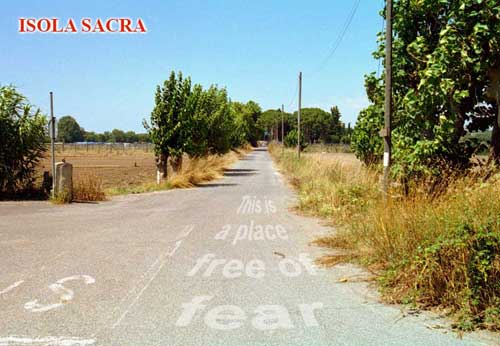
Speciale sectie over de Romeinse begraafplaats van Portus (Engels)....
Read more ...The resurfaced fleet of Pisa

In 1998, an incredible archaeological heritage was discovered by accident near the Pisa San Rossore railway station....
Read more ...Leptiminus
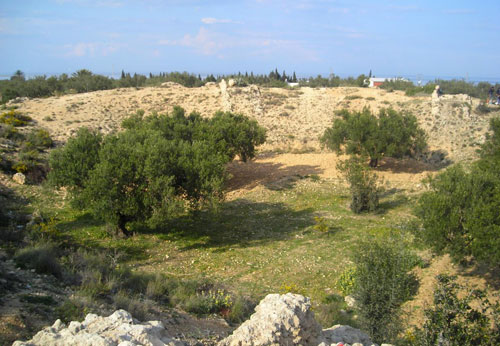
At the site of present-day Lamta on Tunisia's east coast, there was already a port city named Leptis Minor ....
Read more ...Roman maritime trade law

Roman law is the finest monument that Rome bequeathed to Western Europe....
Read more ...Sullecthum (Salakta)

In the Sahel, in the Tunisian province of Madhia, we find by the sea the small town of Salakta....
Read more ...
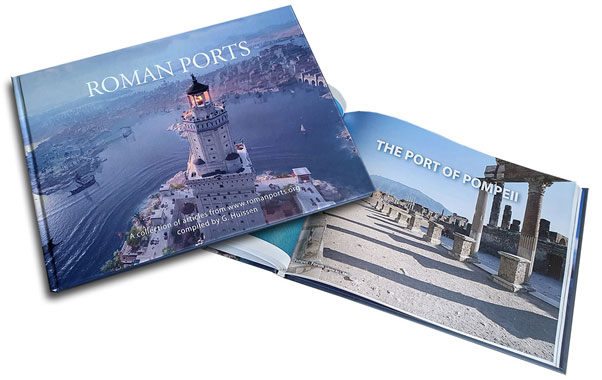
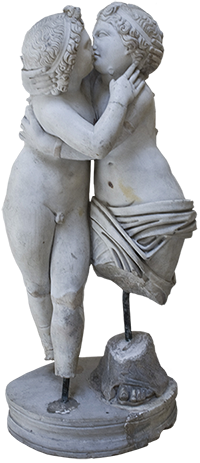 We are committed to providing versions of our articles and interviews in several languages, but our first language is English.
We are committed to providing versions of our articles and interviews in several languages, but our first language is English.